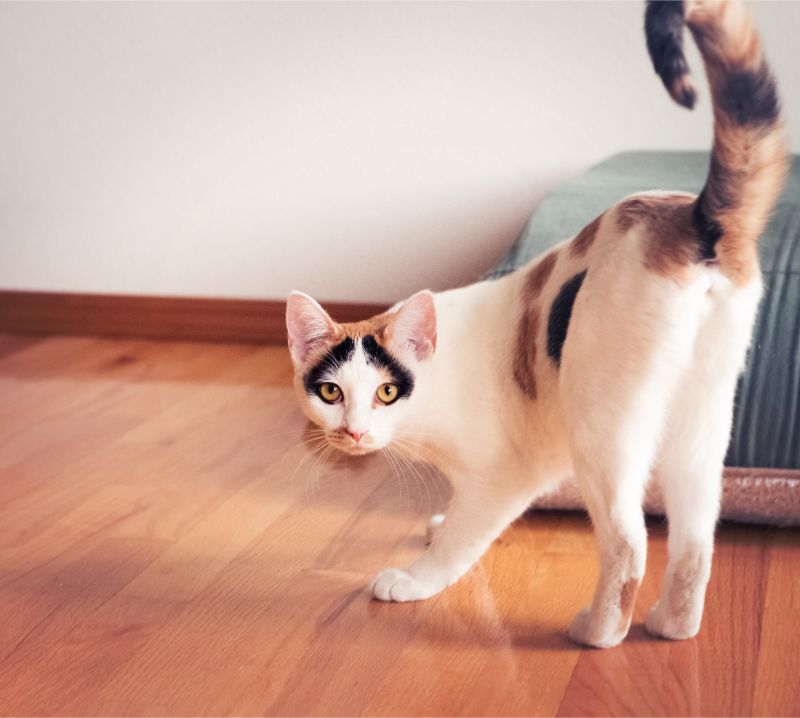What is Your Cat’s Tail Trying to Tell You?

We may not speak the same language as our cats, but that doesn’t mean they can’t communicate effectively with us. While often appearing independent and aloof, cats are constantly communicating their mood, likes, and dislikes with us through that beautiful hind-end appendage, their tail!
When you know what to look for, a cat’s tail can be a wealth of information. With careful observation, and a little help from us at Lone Tree Veterinary Medical Center, you’ll be understanding “cat speak” in no time!
Your Cat’s Tail Can Talk – Visually
Cat owners are used to the sound of meowing felines, but in reality cats rarely use vocalization to communicate with one another. Meows are mainly reserved for kittens, whereas, adult cats use a complex system of body language, scent cues, and signals indicated by the position and appearance of their tail.
Cat Tail Positions
You can learn a lot about a cat by simply watching how it is holding its tail at any given moment. Some of the more common tail positions and what they mean, include:
- Pointed straight up – A tail held high is an indication of friendliness. This is also a sign that the cat is happy and approachable.
- Curved – When a cat is relaxed, the tail will be curved into a U shape. The more confident the cat feels, the higher its tail will move. This happy tail is also signaling playfulness.
- Low – Cats hold their tails close to their bodies when they are feeling unsure or afraid. For most cats, this is not a happy tail and an indication that aggressive behavior could occur.
- Out and behind – When the tail is held out from the body and angled up slightly, the cat may be feeling a bit of indecision or unease. This is a ‘wait and see’ position that could easily change.
- Touching or wrapping around another cat or person – This tail is saying “I like you and want to be your friend.”
- Between the legs – Extreme fear or uncertainty can cause a cat to tuck its tail between its legs (along with a lot of hissing, growling, yowling, and flattened ears). It is a warning that, if provoked, the cat is uncomfortable enough to attack.
- Bristled or puffed out tail fur – When tail fur becomes bristled or puffed out, it indicates alarm or aggression, regardless of the position of the tail. It is also an attempt to appear larger and more intimidating towards a threat.
Wiggles and Jiggles
A cat’s tail seems like it’s always moving. Unlike dogs, that wag their tails out of friendliness, a wagging cat’s tail is a warning sign. Cats often lash their tails back and forth when they are scared or angry and, if agitated, they may react aggressively.
A slowly swishing tail, on the other hand, usually means Fluffy has spotted something enticing, and is zeroing in. Cats will often thump their tails against the ground right before they pounce.
And that adorable twitching or vibrating tail tip? That could mean any number of things from curiosity, stalking, or aggressiveness. As with any interpretation of cat tail language, it’s important to take your cat’s personality, other behaviors such as vocalizations and body positioning, and the individual circumstance into consideration.
Do you have questions about your cat’s behavior? Don’t hesitate to contact our staff for more information, or to schedule an appointment for your pet. We simply love talking “cat”!



